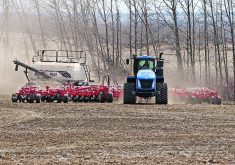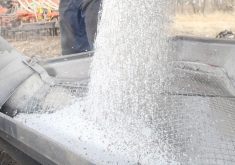The 4R principles promoted by Fertilizer Canada are increasingly accepted and practised by farmers across Canada. It makes sense to apply nutrients from the right source, at the right time, in the right place and at the right rate.
However, recent Fertilizer Canada lobbying has morphed the fourth principle from right rates to holding the line at rates without “a mandatory reduction in the use of fertilizers.” These are 3R and STIR (same to increased rates) principles.
However, highest yields may not be the most profitable yields, depending on fertilizer and other input costs and weather conditions, which often constrain nutrient availability.
Read Also

Rural communities can be a fishbowl for politicians, reporter
Western Producer reporter draws comparisons between urban and rural journalism and governance
It’s not hard to imagine why Fertilizer Canada advocates for maintaining current or higher amounts of fertilizer on Canadian farms, given the correlation of fertilizer amounts with sales revenue.
Fertilizer Canada also warns that a reduced overall amount of fertilizer in Canada “risks Canada’s contribution to the global supply of food,” the putative slam-dunk argument for not sacrificing yield potential. However, Sara Menker of Gro Intelligence calculates that global biofuel crops diverted from food could have provided 2,000 calories per person per day to 1.9 billion people.
Currently, we use prime farmland to grow more livestock feed than needed and give food grade grain to livestock. In an agroecology and sustainable food systems paper, Sara Wyngaarden, Kyra Lightburn and I outlined that by optimizing food processing byproducts and forages for livestock, Ontario could reduce arable land for feed production by 40 percent while maintaining sufficient animal protein in an adequate diet. Farmers could choose to grow food crops on that 40 percent of land now used for feed.
I recommend that farmers be incentivized to reduce fertilizer rates. Let’s suppose that on average, corn farmers apply 180 pounds of nitrogen fertilizer per acre for a yield of 180 bushels of corn per acre, a ratio of 1.0 (180/180). For those who reduce the ratio to less than 1.0, payments could be proportional to the reduction.
For example, by employing genuine 4R principles, a fertilizer rate of 150 lb. of nitrogen fertilizer per acre might result in 170 bu. of corn per acre, a ratio of 0.88 (150/170).
Others may use genuine 4R principles by applying manure to support corn growth and then limit nitrogen fertilizer to 90 lb. per acre. If the manure supplies enough nitrogen, the corn will yield 180 bu. per acre and the ratio will be 0.5 (90/180).
Organic farmers, who do not apply synthetic fertilizer, would have a ratio of 0 (0/150). Organic systems can still achieve average corn yields of about 150 bu. per acre.
Similar incentive payments could be calibrated to average fertilizer to yield ratios for each crop, in each region. Payments should be contingent on submission of a nutrient management plan to ensure that manure or other organic amendments are not applied in excess.
Nitrogen fertilizer when manufactured is an energy hog and accounts for more than 50 percent of total energy use in commercial agriculture. The fossil fuels, especially natural gas to manufacture nitrogen fertilizer, result in concomitant greenhouse gas emissions.
For Canadian agriculture to meet its 30 percent fertilizer emissions reduction target by 2030, it is critical to reduce the overall amount of nitrogen fertilizer used in Canada and not default to 3R and STIR. This target and beyond is necessary and possible, so let’s get on with it.
Ralph C. Martin is a retired professor from the University of Guelph.















